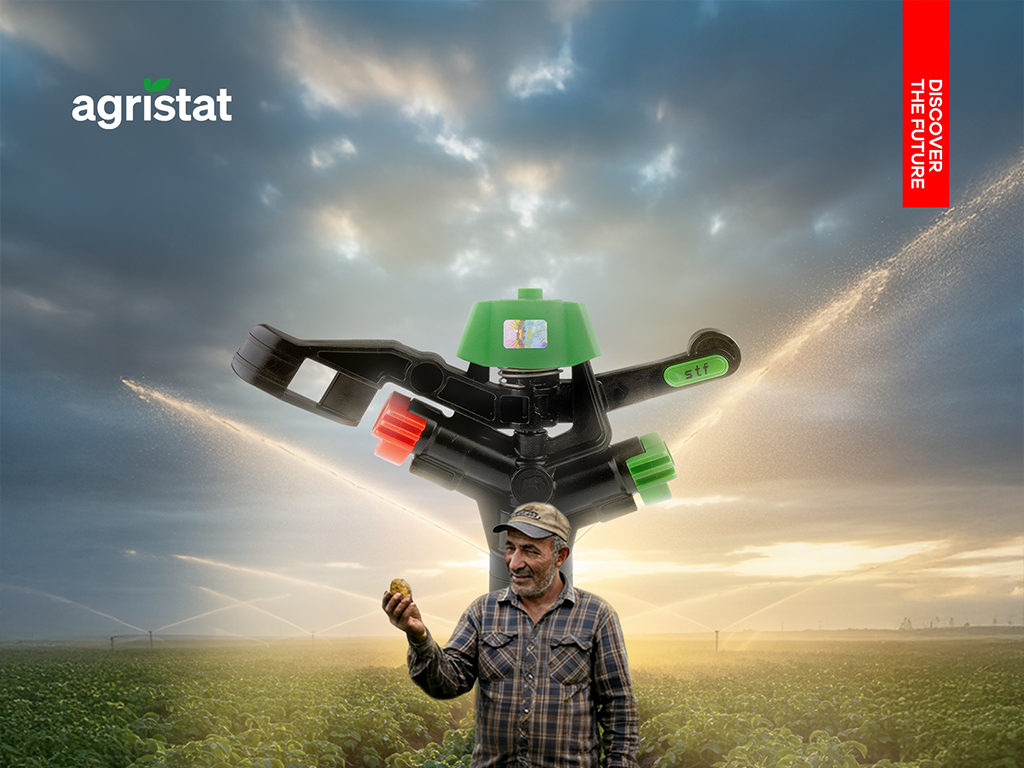
Sprinkler Types
Choosing the right irrigation method is a key factor in maximizing agricultural productivity while conserving water. Among the most widely used and effective methods is the sprinkler system, which comes in various types tailored to different field conditions and crop needs.
In this article, we will explore the different types of sprinkler, their use cases, advantages, and how to select the right one for your land.
The Core Function of Sprinkler Systems
Sprinklers systems are pressurized irrigation tools that simulate rainfall by distributing water evenly across the land through specialized spray heads. These heads — known as sprinklers — release water in specific angles and patterns, ensuring equal moisture for all plants.
Since no two fields are the same, a wide variety of sprinkler types have been developed to suit various irrigation goals.
Main Types of Sprinklers
1. Fixed-Angle Sprinks
These sprinklers deliver water at a predefined angle (usually 90°, 180°, or 360°), making them ideal for corner or edge areas.
Benefits:
- Controlled spray zones
- Reduced water waste
- Ideal for landscaping and small gardens
2. Adjustable-Angle Sprinklers
These types allow users to set the spraying angle based on their specific needs. They are suitable for both agricultural and residential applications.
Benefits:
- Flexible and customizable
- Perfect for irregular-shaped plots
- Easy to reposition and adjust
3. Rotator Sprinklers (Rotating Heads)
These sprinklers rotate while spraying water in a circular pattern. They cover a wide area using fewer heads.
Benefits:
- Broad coverage
- Cost-effective for large fields
- Reduced number of units needed
4. Impact Sprinklers
Often used in agriculture, impact sprinklers rotate by mechanical action using water pressure. They’re durable and suitable for high-pressure applications.
Benefits:
- Long-lasting performance
- Excellent for open agricultural fields
- Resistant to clogging and sediment
5. Mini Sprinklers (Micro Sprinklers)
Designed for small spaces such as greenhouses, nurseries, and flower beds.
Benefits:
- Delicate water delivery
- High water efficiency
- Can be integrated with drip irrigation systems
6. Sprinklers for Drip System Integration
Some sprinklers are designed to complement drip irrigation lines, offering hybrid watering solutions for row crops and greenhouses.
Benefits:
- Dual irrigation functionality
- Precise moisture control at plant roots
- Efficient for indoor or covered farming
How to Choose the Right Sprinkler Type
Choosing the best sprinkler depends on:
- Land size and shape
- Type of crops grown
- Water pressure availability
- Climate and evaporation rate
- Budget and maintenance capacity
Matching the right sprinkler type to your needs can dramatically improve efficiency and crop yield.
Sprinkler Products by STF
STF designs and manufactures high-quality sprinkler heads tailored for different agricultural scenarios. Their product range includes:
- S17 Sprinkler – Provides uniform distribution over wide areas
- S10-K Sprinkler– Adjustable and versatile for custom layouts
- Mini Sprinkler – Precision irrigation for greenhouses
All STF sprinklers are:
- Made from UV-resistant plastic
- Compatible with automated systems
- Pressure-resistant and clog-resistant
- Easily combined with plastic filters for longer lifespan
The Role of Filters in Sprinkler Systems
To ensure your sprink system operates without blockages, filters are essential. STF offers high-quality plastic filters that trap sand, dirt, and sediments.
Benefits of pairing sprinkler with filters:
- Extended product life
- Reduced maintenance frequency
- Consistent water pressure and flow
Conclusion: Versatile Sprinkler Types for Modern Farming
The diverse range of sprinkler types available today makes it easier than ever to build efficient, water-saving irrigation systems tailored to any agricultural project. Whether you’re farming vegetables, fruits, or turf, there’s a sprinkler model designed to help your land thrive.
With STF’s engineering expertise and durable materials, choosing the right sprinkler is no longer a challenge — it’s an opportunity to enhance your yield while conserving resources.

